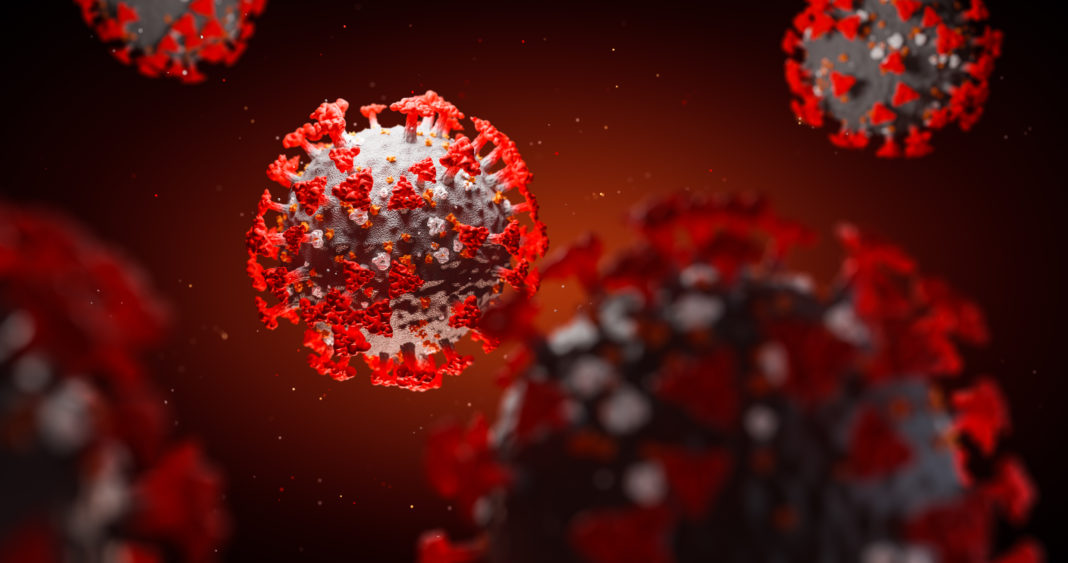Long before omicron was making headlines, a group of microbiologists studying SARS-CoV-2 mutations was predicting the future evolutionary maneuvers of SARS-CoV-2 and forecasting their ability to evade immune defenses. They developed their predictions based on rare mutations documented in immunocompromised patients, existing SARS-CoV-2 genotypes, and the virus’s current molecular structure and behavior. In doing so, they identified several likely mutations that would allow the virus to evade immune defenses, including natural immunity acquired through infection and developed from vaccination as well as antibody-based treatments.
Since the study was completed, several of the team’s predicted mutations have appeared in the omicron variant, offering insight into how omicron might be able to escape immune defenses. The study highlights the urgent need to help curb viral evolution and future mutations through mitigation measures and by ensuring global immunity through mass vaccination.
This research is published in Science, in the paper, “Structural basis for continued antibody evasion by the SARS-CoV-2 receptor binding domain.”
“Our findings suggest that great caution is advised with omicron because these mutations have proven quite capable of evading monoclonal antibodies used to treat newly infected patients and antibodies derived from mRNA vaccines,” said Jonathan Abraham, MD, PhD, assistant professor of microbiology in the Blavatnik Institute at Harvard Medical School.
The researchers focused on the receptor-binding domain (RBD) of the spike protein, demonstrating that the virus could develop large numbers of simultaneous escape mutations while retaining the ability to connect to the receptors it needs to infect a human cell. The findings show that pseudo-type viruses containing up to seven of these escape mutations are more resistant to neutralization by therapeutic antibodies and serum from mRNA vaccine recipients.
Abraham tweeted that most prior studies examined RBD escape mutations in isolation or in small numbers, but here they studied variants that contain many simultaneous spike protein mutations—for example, RBD mutations at K417, T478, E484, Y489, Q493, S494, and N501, and NTD deletions.
This level of complex evolution had not been seen in widespread strains of the virus at the time the researchers began their experiments. But with the emergence of the omicron variant, this level of complex mutation in the RBD is no longer hypothetical. The delta variant had two mutations in its RBD, while omicron appears to have 15—including several of the specific mutations that the team analyzed.
The researchers performed biochemical assays to see how antibodies would bind to spike proteins containing escape mutations. Several of the mutations, including some of those found in omicron, enabled the pseudotypes to completely evade therapeutic antibodies, including those found in monoclonal antibody cocktail therapies.
One antibody was identified that was able to neutralize all of the tested variants effectively. However, they also noted that the virus would be able to evade that antibody if the spike protein developed a single mutation that adds a sugar molecule at the location where the antibody binds to the virus.
The researchers noted that in rare instances, circulating strains of SARS-CoV-2 have been found to gain this mutation. When this happens, it is likely the result of selective pressure from the immune system, the researchers said. Understanding the role of this rare mutation, they added, is critical to being better prepared before it emerges as part of dominant strains.
While the researchers did not directly study the pseudotype virus’s ability to escape immunity from natural infection, findings from the team’s previous work with variants carrying fewer mutations suggest that these newer, highly mutated variants would also adeptly evade antibodies acquired through natural infection.
In another experiment, the pseudotypes were exposed to blood serum from individuals who had received an mRNA vaccine. For some of the highly mutated variants, serum from single-dose vaccine recipients completely lost the ability to neutralize the virus. In samples taken from people who had received a second dose of vaccine, the vaccine retained at least some effectiveness against all variants, including some extensively mutated pseudotypes.
The researchers noted that their analysis suggests that repeated immunization even with the original spike protein antigen may be critical to countering highly mutated SARS-CoV-2 spike protein variants.
They caution that the study findings are not directly applicable to omicron because how this specific variant behaves will depend on the interplay among its own unique set of mutations—at least 30 in the viral spike protein—and on how it competes against other active strains circulating in populations around the world. Nonetheless, the researchers said, the study gives important clues about particular areas of concern with omicron, and also serves as a primer on other mutations that might appear in future variants.
The findings also highlight the importance of ongoing anticipatory research into the potential future evolution of not only SARS-CoV-2 but other pathogens as well, the researchers said.
“To get out of this pandemic, we need to stay ahead of this virus, as opposed to playing catch up,” said Katherine Nabel, a graduate student in the Abraham lab. “Our approach is unique in that instead of studying individual antibody mutations in isolation, we studied them as part of composite variants that contain many simultaneous mutations at once—we thought this might be where the virus was headed. Unfortunately, this seems to be the case with omicron.”
“This virus is a shape-shifter,” Abraham said. “The great structural flexibility we saw in the SARS-CoV-2 spike protein suggests that omicron is not likely to be the end of the story for this virus.”



